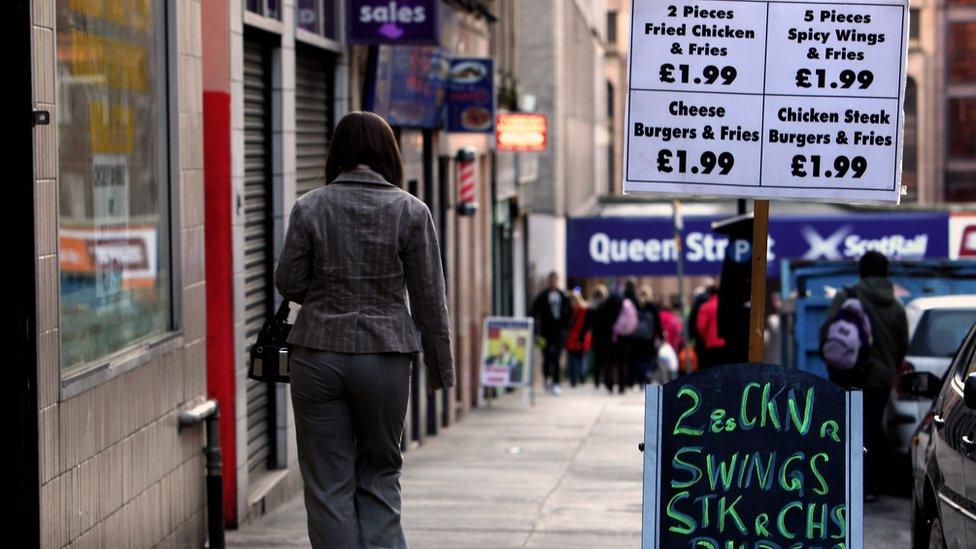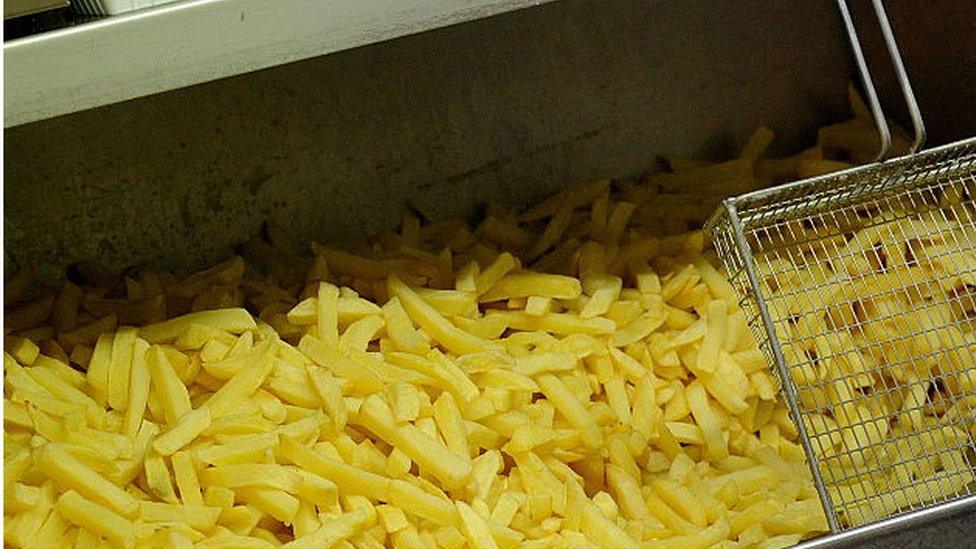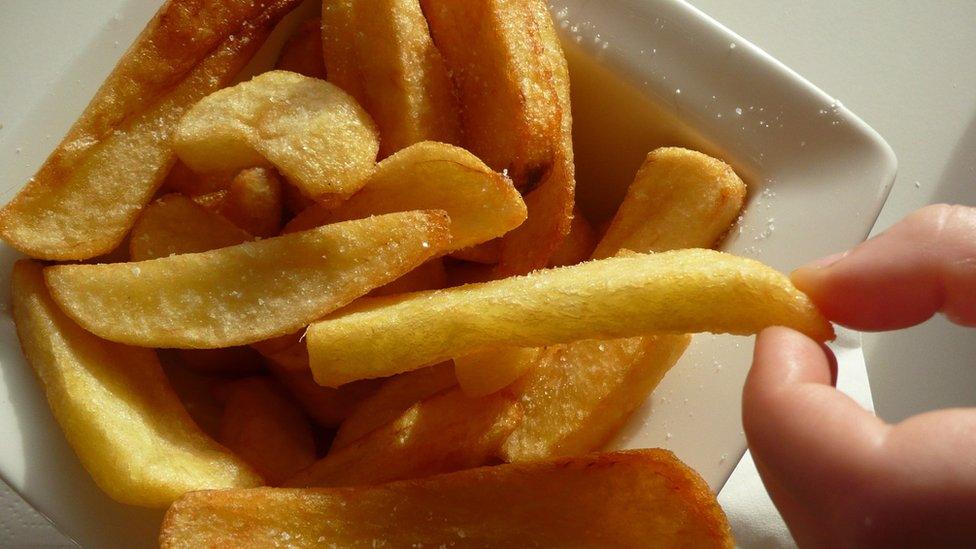Portion of chips '80% bigger than in 2002'
- Published
- comments

A survey of takeaways in Glasgow has found the average size of a portion of chips has increased by more than 80% since 2002.
Campaign group Obesity Action Scotland (OAS) said it had visited 30 outlets and found that the average single portion of chips weighed 380g.
That compared with an average serving of 210g, detailed by the Food Standards Agency's portion booklet in 2002.
OAS has called for new laws to control portion sizes and a calorie cap.
The group collected 40 samples of chips from Glasgow takeaways in the last two weeks of May.
It found that more than 92% of the servings were bigger than the 2002 average of 210g.
Eighteen of them were more than twice as big, with the largest portion weighing in at 755g. The smallest was 120g.

The largest portion size was a bag of chips weighing 755g
Lorraine Tulloch, from Obesity Action Scotland, said the servings were well beyond healthy levels.
She said: "What is served as a portion of chips has grown significantly since 2002.
"Today's average bag of chips contains around half of the daily recommended calorie intake for a woman.
"We are urging action to improve the out-of-home food environment to ensure people have access to smaller portions and are aware of the calorie content of the items they are purchasing."
Changing expectations
According to Food Standards Scotland, chips are the most popular food consumed out of the home in Scotland.
However, Paul Jaconelli, who has run a chip shop in the Maryhill area of Glasgow for more than 30 years, said customers would vote with their feet if portion sizes were cut.
He said: "People would complain about the size of the portion they were getting before they would complain about the price.
"The portion size is something that has evolved over the years. It is about the expectation of the customer. They would soon let you know if the portion sizes were too small and they would just take their business elsewhere.
"In my experience people come to the shop for the quality, the portion size and then the price. They want value for money."

Campaigners are calling for portion sizes to be reduced to fight obesity
The Scottish government published its healthier future plan, external last month, which said nearly one billion visits had been made by Scots to eateries outside the home in 2015 alone.
It said: "With more than 30,000 out-of-home food outlets in Scotland, the role that the out-of-home sector can play should not be underestimated.
"Establishments that embrace healthier options with fewer calories, provide clear nutrition information and offer a greater proportion of smaller portion sizes will help Scotland to progress towards its dietary goals."
Food Standards Scotland is due to launch a consultation on ways to make the sector healthier in the autumn.
Its head of public health nutrition, Heather Peace, said: "The findings are in line with other studies, including our own survey which showed that around a quarter of main meals bought outside of the home contain more than 1,000 calories, equivalent to half the daily calorie needs of an average woman.
"Food Standards Scotland will propose measures in a consultation later this year aimed at improving the food and drink available when we're eating out, including actions to support calorie reduction, improving information for consumers and increasing healthier choices."